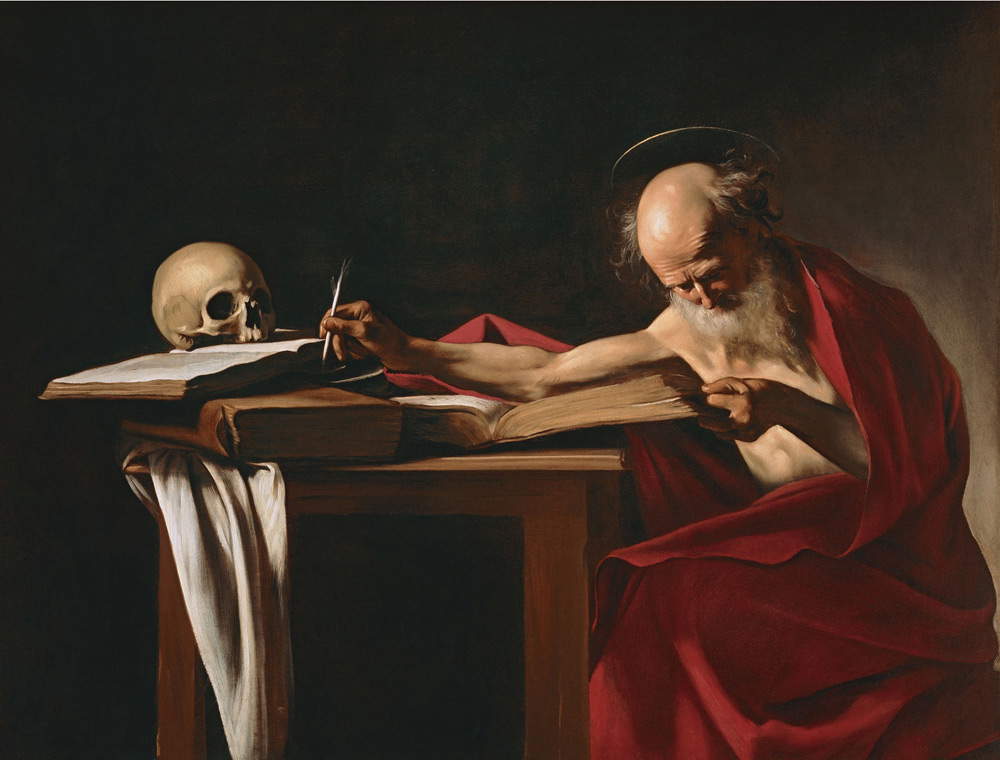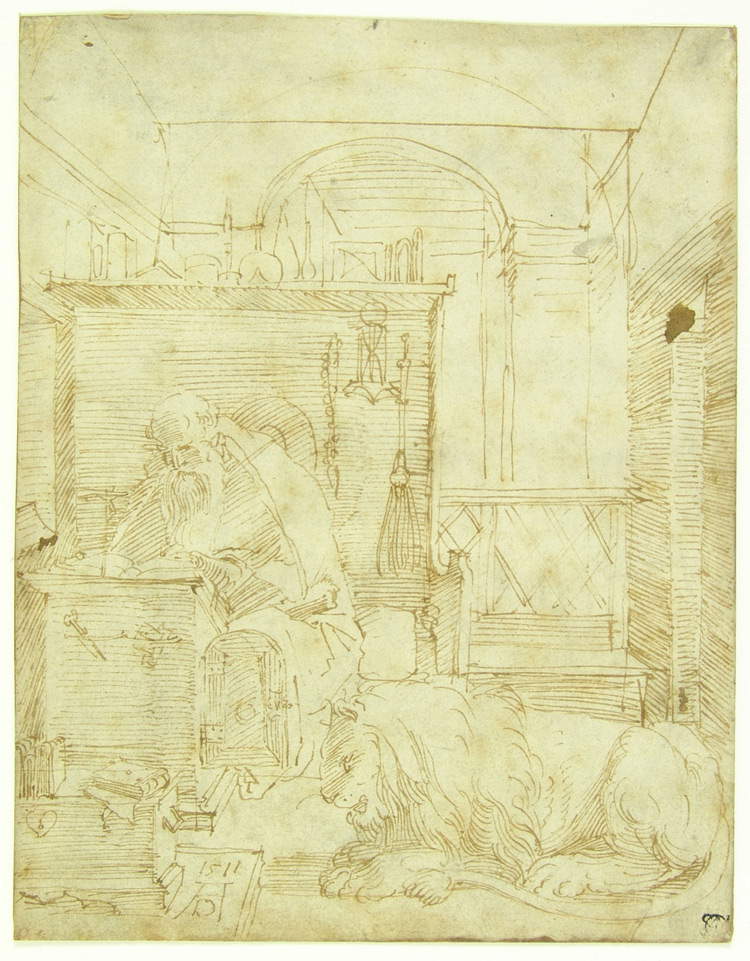Iconography of a saint. Caravaggio's Saint Jerome in Milan.
Only a few more days to visit the exhibition at the Pinacoteca Ambrosiana, Milan - extended until March 12. A masterpiece by the last Roman Caravaggio, the Saint Jerome Writing, temporarily replaces the Basket of Fruit on loan to the Galleria Borghese. Around it a series of drawings testify to the saint’s iconographic fortune over three centuries.
A symbolic as much as singular temporary exchange of Caravaggesque masterpieces, at a distance of space and time (Rome and Milan after four centuries), between two cardinals who were also very different from each other as personalities - diversity over which triumphs, in its unity, the spiritual greatness of Caravaggio’s art, as Anna Coliva writes for the occasion. While in fact the Basket of Fruit that once belonged to Federico Borromeo went from the Pinacoteca Ambrosiana to the Galleria Borghese for an exhibition on still life, from here the St. Jerome writing formerly by Scipione Borghese made the reverse journey to become the pivot of an exhibition on the iconography of the saintly Doctor of the Church. Sobering-in keeping with Jerome’s life as an ascetic and scholar, probably less well known than recent or concomitant Caravaggesque appointments (including Around Caravaggio at Brera and Artemisia Gentileschi and Her Time in Rome), yet of some interest and not just more trivially because of the arrival of a Merisi in the city.
Caravaggio’s Saint Jerome Writing.
Caravaggio ’s Saint Jerome Writing is yet another of his powerful inventions, capable he as he always was of renewing, while simplifying, established iconographies. Original here is the format and spatial conception all horizontal, with the two fulcrums of the composition constituted by the saint’s head and skull, in a silent dialogue between them. The painting, based on an essential palette where the red of the robe predominates over the other more neutral or dull tones, is even less conventional than Montserrat’s already admirable version and in many ways considered its “clone.” Both are dated between May 1605 and May 1606, i.e., the last year of the painter’s glorious Roman sojourn, which ended disastrously with the fatal wounding of one of his rivals, costing him his escape from the Urbe and the beginning of a nonetheless fruitful and stylistically different artistic phase. Incidentally, he was to paint yet another and quite different St. Jerome in Malta, while at least a couple of other versions, in Naples and Messina, are remembered in the sources but still to be traced.
 |
| Caravaggio, Saint Jerome Writing (1605-1606; oil on canvas, 112 x 157 cm; Rome, Galleria Borghese) |
The 16th-17th century drawings
The hermit saint interpreted by the master is accompanied by similar subjects made in various periods, which testify to the critical and devotional fortune of the theme and exemplify to the visitor the different interpretative choices of the same, variously accompanied by the traditional attributes. These other pieces on display all belong to the Ambrosian institution, Library in particular, which thus enhances its lesser-known collecting heritage, dealing with drawings, all to be discovered and in some cases reevaluated, in cases where their traditional autography is questioned here. Drawings, eight in total, by more or less celebrated masters, from Albrecht Dürer to Isidoro Bianchi, from Giacomo Zoboli to Donato Creti via Giuseppe Nuvolone. Still others, still in search of identity, belong to areas of some importance such as those of Giulio Romano and Guercino.
 |
| Albrecht Dürer, Saint Jerome in the Study (1511; pen (counterfoil), 19.4 x 15.1 cm; Milan, Biblioteca Ambrosiana) |
 |
| Isidoro Bianchi, Saint Gregory and Saint Jerome (second decade of the 17th century; pen, watercolor ink, white lead, and black pencil on blue paper, 39 x 46.6 cm; Milan, Biblioteca Ambrosiana) |
 |
| Giuseppe Nuvolone, Saint Jerome (c. 1681; black pencil and white chalk on gray-green paper, 30.6 x 20 cm; Milan, Biblioteca Ambrosiana) |
 |
| Ambito di Giulio Romano, Saint Jerome Translating the Bible (First half of the 16th century and later intervention; pen, watercolor ink, white lead, and black pencil (counter grounded), 27.4 x 22 cm; Milan, Biblioteca Ambrosiana) |
The exhibition is accompanied by a succinct catalog published by Nomos, with contributions by Maria Teresa Fiorio, Marco Navoni and Benedetta Spadaccini among others, where three paintings, also on the same theme and from the same museum, also find their place. It is possible to visit the exhibition, concentrated in the Federiciana Hall that closes the Pinacoteca’s tour, separately with a reduced ticket, or of course as part of the Pinacoteca’s normal tour.
Warning: the translation into English of the original Italian article was created using automatic tools. We undertake to review all articles, but we do not guarantee the total absence of inaccuracies in the translation due to the program. You can find the original by clicking on the ITA button. If you find any mistake,please contact us.



























